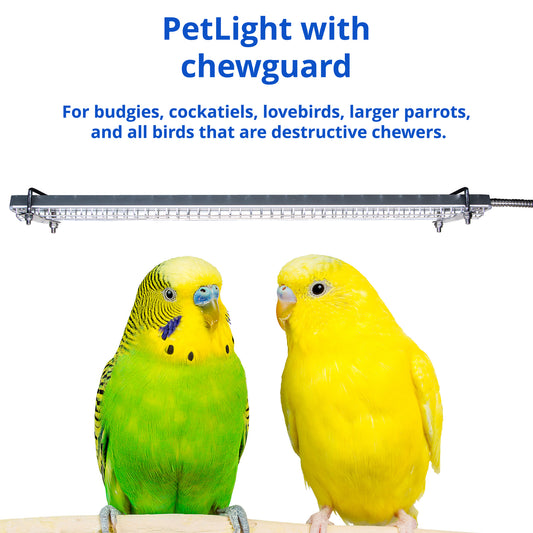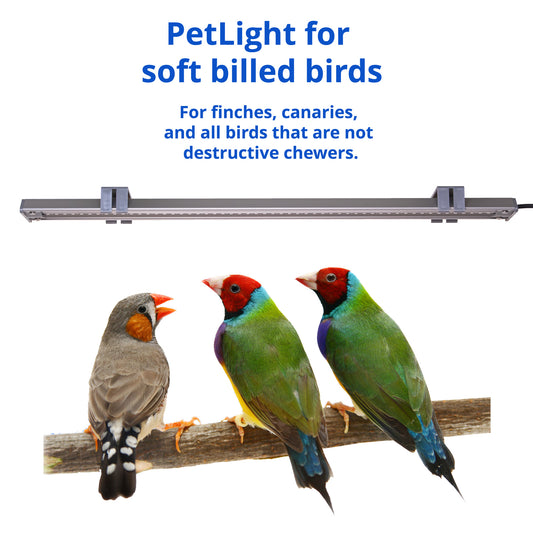Do Birds Need Night Lights? Pros and Cons
Share

As a bird owner, it’s natural to want your feathered friend to feel safe and secure at all times — even at night. That leads many to wonder: Should I leave a night light on for my bird?
While some pets benefit from a soft glow after dark, others sleep best in total darkness.
This guide breaks down the pros and cons of bird night lights, when they make sense, and how to choose one that doesn’t disrupt your bird’s natural rhythm.
🌒 The Natural Environment: Darkness Signals Rest
In the wild, birds are governed by the rise and fall of the sun. As daylight fades, birds naturally retreat to roosts, reduce activity, and begin their rest period. Darkness is the environmental cue that tells them it’s time to sleep.
Most birds have a finely tuned internal clock that aligns with sunrise and sunset, and for many, darkness equals safety. It’s part of their instinctive rhythm, honed over generations in the wild.
But indoors, the story can be different.
🏠 Indoor Disruptions: Why Night Lights Are Considered
Inside your home, your bird is exposed to a completely different sensory landscape.
Bright screens, hallway lights, appliances turning on, car headlights, or even nearby movement can interfere with their ability to stay calm and undisturbed after sundown.
In some cases, birds may become agitated, startled, or confused when plunged into sudden total darkness — especially if a small noise or shadow appears.
This is especially true in:
-
Urban homes with light pollution or noise
-
Shared family spaces where lights or TVs stay on late
-
Situations with frequent room traffic or cage movement
⚠️ What Are Night Frights — and Who’s at Risk?
A night fright is a sudden, panicked reaction birds have in the dark.
It often involves frantic flapping, crashing into cage bars, or loss of feathers. Cockatiels are particularly known for experiencing them, though it can happen to any species.
They may be triggered by:
-
Sudden noises (door slams, footsteps, nearby voices)
-
Moving shadows or car lights through a window
-
Complete darkness after a late night disturbance
These frights can be dangerous — birds may injure themselves on perches or cage walls, or be left shaken and disoriented by the next morning.
🕊️ When a Bird Night Light Might Help
A soft, very low light can help some birds stay oriented after dark, especially if they’re recovering from stress, relocation, or already prone to night frights.
Consider a night light if your bird:
-
Has experienced night frights more than once
-
Is young, newly adopted, or still adjusting to a new home
-
Is housed in a high-traffic area (living room, hallway)
-
Is exposed to nearby ambient light or unpredictable noises
-
Becomes unsettled during cage cover removal in early morning
💡 Choosing the Right Night Light: Key Considerations
If you decide to introduce a night light, it’s critical to choose the right type — subtle, warm, and consistent.
✅ Color temperature: Use warm white or amber tones. Avoid blue or cool white light, which can resemble daylight to birds.
✅ Brightness: Keep it extremely low — just enough to reduce contrast and help your bird orient if startled.
✅ Placement: Indirect, soft lighting works best. Never shine the light directly into the cage.
✅ Flicker-free: Birds can detect flicker at a rate invisible to humans. Flickering light, even at low intensity, can cause anxiety and disrupt sleep.
✅ No UVB: There’s no reason to use a UVB-emitting light at night — or ever, for that matter, in an indoor bird setting.
✅ Timed or manual shutoff: Use a dimmer or timer to control duration and avoid exposure throughout the night if unnecessary.
🌌 Is Darkness Still Best?
In most cases — yes. Birds are adapted to total darkness, and rest more deeply in a dark, quiet environment. Unless your bird shows signs of stress or repeated night frights, complete darkness is the best default.
Instead of using a night light constantly, some owners use a low-watt bulb in an adjacent room (like a hallway) or install motion-activated soft lighting in rare cases.
Night lighting should be treated as a temporary support — not a replacement for a natural night/day cycle.
🧩 Conclusion
Birds don’t need night lights by default.
But in specific situations — such as fear, recovery, or environmental stress — a low, flicker-free, warm-toned night light can be a useful tool for comfort.
As with everything in bird care, the right solution depends on your individual bird’s behavior and routine. Start from what’s natural, and adjust with care.




